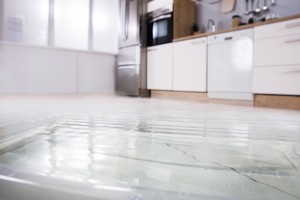 The convenience of a dishwasher is something you probably give little thought to until something goes wrong. When a dishwasher starts leaking or has other issues, you may need to call in a professional plumber, but there are some small issues you can repair yourself. Start with finding the source of the problem.
The convenience of a dishwasher is something you probably give little thought to until something goes wrong. When a dishwasher starts leaking or has other issues, you may need to call in a professional plumber, but there are some small issues you can repair yourself. Start with finding the source of the problem.
Find the dishwasher leak
Several components of a dishwasher work together to ensure none of the water seeps out of the machine. When just one of those parts begins to wear or malfunction, leaks can occur. Where the water is coming from will be your biggest clue as to what’s causing the problem.
- Dishwasher door leak: Similar to your refrigerator, a rubber gasket lines the dishwasher door. If the gasket hardens or tears, it can become ineffective, allowing water to leak from the door area.
- Dishwasher hose leak: The connection source that carries water from your plumbing system to your dishwasher can become loose. If the hose is misaligned or the rubber gasket binding the two pieces together is faulty, water will leak from the water source (typically under your kitchen sink).
- Dishwater leaks from bottom: If you notice water underneath the dishwasher after it runs, there are a few components that could be the source. The dishwasher drain, pump seal or water inlet could be the cause of the leak. This type of leak will call for you to remove the front kick plate (small portion of the front of the dishwasher closest to the floor) to see if you can find the water source. If a loose hose is the problem, it’s a relatively easy fix. However, if you’re not a DIY person, you may feel more comfortable calling a plumber if the gasket or pump need to be replaced.
Problems other than leaks can also cause your dishwasher to malfunction.
Dishwasher doesn’twashdishes
If you find that your dishwasher doesn’t produce any water to clean the dishes, look at these elements:
- Float switch: The dishwasher’s float assembly is located on the inside, bottom portion. When water fills your dishwasher, it lifts the float. At a certain level the float assembly triggers the float switch to shut off, stopping the flow of water to the dishwasher. If this switch breaks or gets stuck in the up position, it won’t allow water to flow into the machine. Replacing the switch should fix the problem.
- Door sensor: The dishwasher door “clicks” closed to signify it is sealed and no water will leak out when it’s turned on. Without that “click,” the dishwasher will not allow water to start flowing. The latch may be broken or obstructed by food or another object. However, if the latch is working properly, the electronic switch that prompts the water may need to be replaced.
- Water valve: If water flows normally from your kitchen faucet, check the valve beneath the sink that sends water to the dishwasher. If the valve is closed, open it. If the valve is fully open, check the connector hose to ensure there are no holes or kinks.
Once you’re able to identify the source of the problem you can decide how comfortable you feel in making the necessary repairs or calling a plumber to handle the job.
